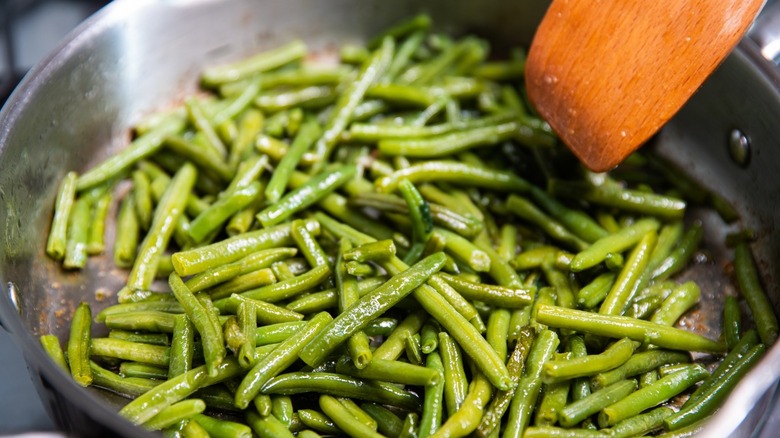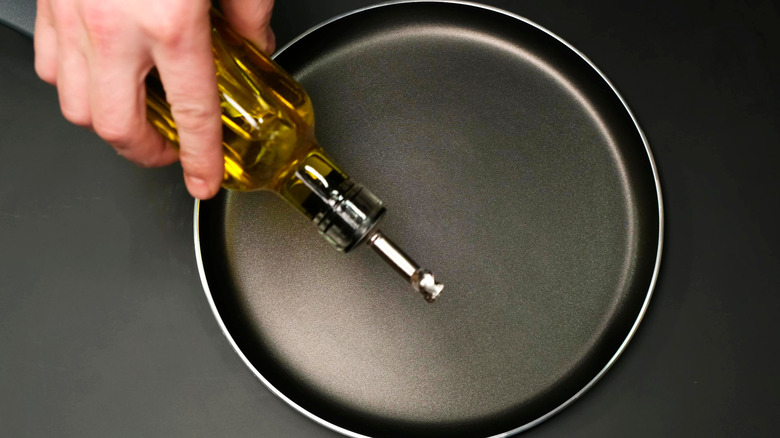The Preparation Mistake Most People Make When Sautéing
While those of us who aren't culinarily inclined are unlikely to attempt a beef Wellington, we can certainly toss some ingredients in a pan and make a stir fry, right? Every Tom, Dick, and Harry knows you just have to put some oil in a pan, heat it up, then add your ingredients. Why, then, is food constantly getting stuck to the bottom of the pan!? If you agreed with Tom, Dick, and Harry, therein lies your problem.
One of the most common mistakes people make when sautéing is introducing cooking oil or fat to the pan before allowing the pan to sufficiently heat up. When oil is added to a cold pan and then heated, the oil is subjected to heat for a longer duration than if it were added when the pan was already hot. As such, the likelihood of the oil reaching its smoke point before the food is through cooking increases.
The smoke point is the temperature at which the oil begins to smoke and burn. When this happens, the oil begins to oxidize and burn, releasing polymers that stick to the bottom of the pan, making it less slick. What's more, because metal has pores that expand when exposed to heat, much of the oil put into a cold pan is absorbed into the pan before the food has even been introduced. When cold food is then added, it causes the pores to contract, gripping the surface of the food and causing it to stick.
How hot is hot enough?
Allowing your pan to heat up before introducing oil to it is a simple solution that can help prevent food from sticking to the pan. In fact, there's an exact temperature that the pan should reach before the oil comes into play. Because sautéing requires medium-high to high heat, the pan should reach a whopping 425 F before oil is introduced. While the temperature of the pan can be measured using a surface thermometer, a common cooking tool used to measure the temperature of grills and pans, you can just as easily gauge whether the pan is hot enough using a drop of water.
After the pan has sat over a medium-high flame for five minutes or so, introduce just a droplet of water. If the droplet quickly bubbles away, that's a surefire sign that your food is going to stick to the pan. If the water transforms into a tiny ball that seems to hover over the pan, however, the pan is ready to be oiled up. This phenomenon, called the Leidenfrost Effect, occurs when a liquid comes into contact with a surface hotter than its boiling point, causing it to create a layer of vapor that prevents it from immediately boiling off. Because this typically occurs at 379 F, you'll know that your pan is nearly hot enough to start sauteing without running the risk of the food sticking to the pan.

